Written by Kareem LaTouche
The Cockpit Country in Jamaica isn’t just a place; it’s a portal to the island’s rich history and unique biodiversity. Recently, I ventured deep into Trelawny Parish for an unforgettable eco-adventure unlike any other. What prompted this? An international graduate student, studying ecology, reached out to me and asked if I could curate a tour of the area.
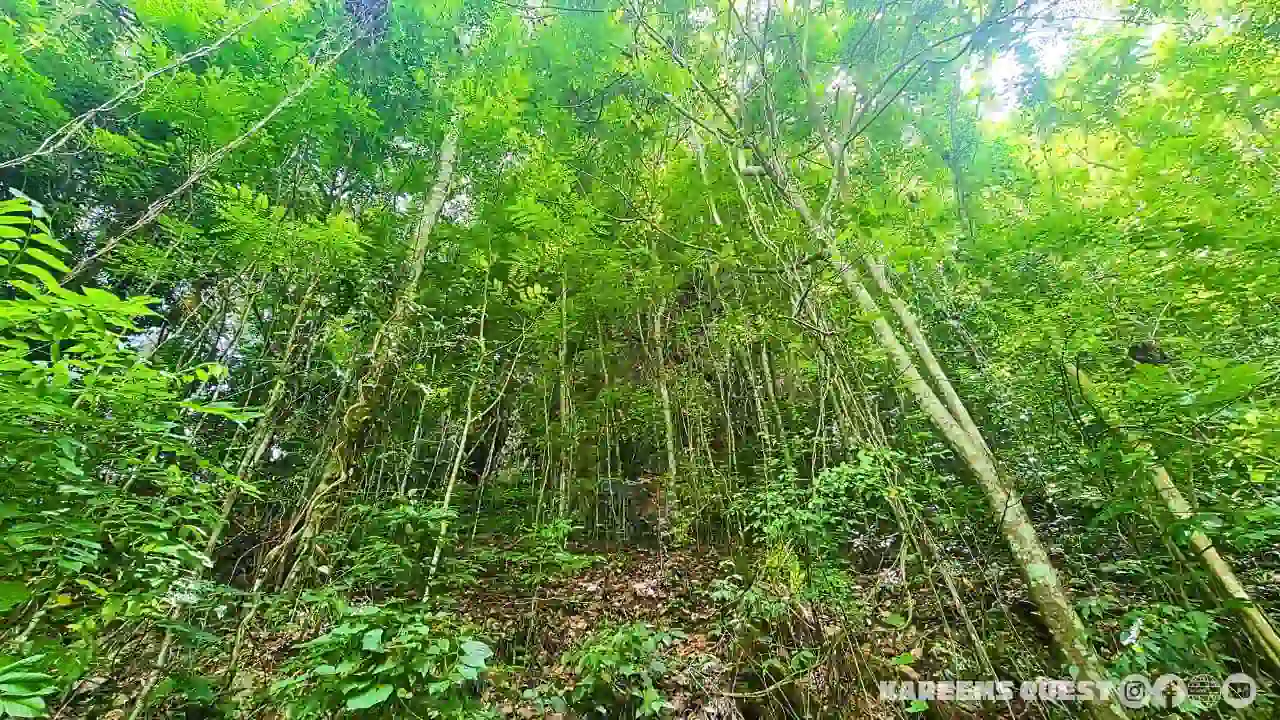
Our journey began in the bustling town of Albert Town, phones rendered useless by the spotty cell service. Thankfully, the tour operator, a man with a warm smile and a distinctive salt-and-pepper goatee, Hugh Dixon, identified us in the square by stating,
“you guys are the only ones who look like you are not from around here.”
To which I jokingly replied, “you are correct, is this Mr. Dixon?”
He then drove us to Rock Spring, the official starting point for our exploration.
Quick Facts
Who is it for: Historians, Adventurers
What it’s NOT: A leisurely stroll – be prepared for a moderate hike
What stands out:
- Millions-year-old limestone formations with hidden caves
- Lush rainforest teeming with endemic flora and fauna (Jamaican Streamertail, Blue Morpho butterfly)
What to carry:
- Comfortable hiking shoes
- Long-sleeved shirt and pants (for mosquitoes)
- Reusable water bottle
- Sunscreen and insect repellent
- Small amount of cash for local vendors
Degree of difficulty of activity: Moderate – The terrain can be uneven and require some physical fitness
Must-try food:
- Freshly picked fruits like bananas
- Local dishes at small community restaurants (check availability) – ackee and saltfish, jerk chicken, yam
What it’s similar to: The Blue and John Crow Mountains National Park (hiking, nature, history)
Location: Albert Town, Trelawny
Contact: Hugh Dixon, 876-393-6584
My Tour of the Cockpit Country
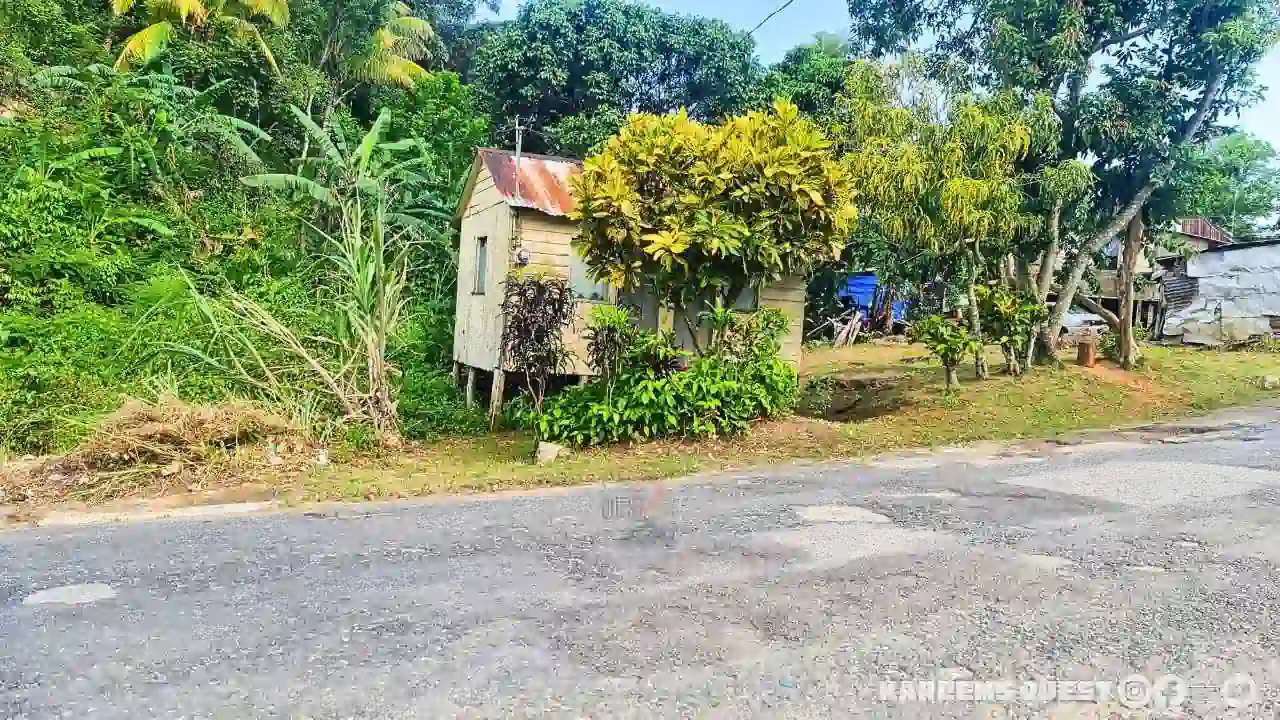
Here, we met Ainsworth Smith, our official Cockpit Country guide, and a furry white canine companion – a seasoned veteran of countless tours. Smith laid down the golden rule: “Take nothing but pictures, leave nothing but footprints, and keep nothing but time.” A powerful reminder of the delicate balance between exploration and preservation.
Towering Limestone Giants and Lush Verdant Dreamscapes
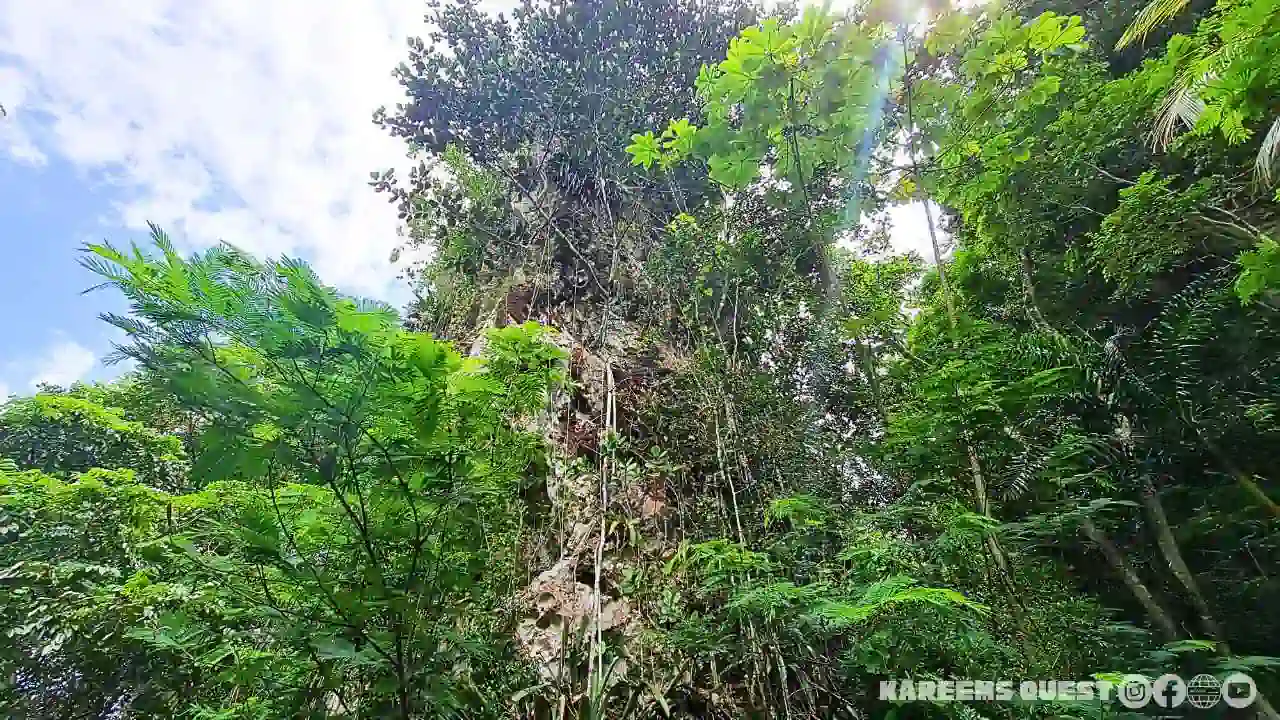
The first sight to steal my breath away was the majestic limestone cliffs, their imposing silhouettes etched against the endless sky. These geological wonders are not merely impressive; they are ancient giants, telling tales of a bygone era. Geologists estimate the Cockpit Country’s limestone began forming on the seabed a staggering 45 million years ago, during the Eocene epoch.
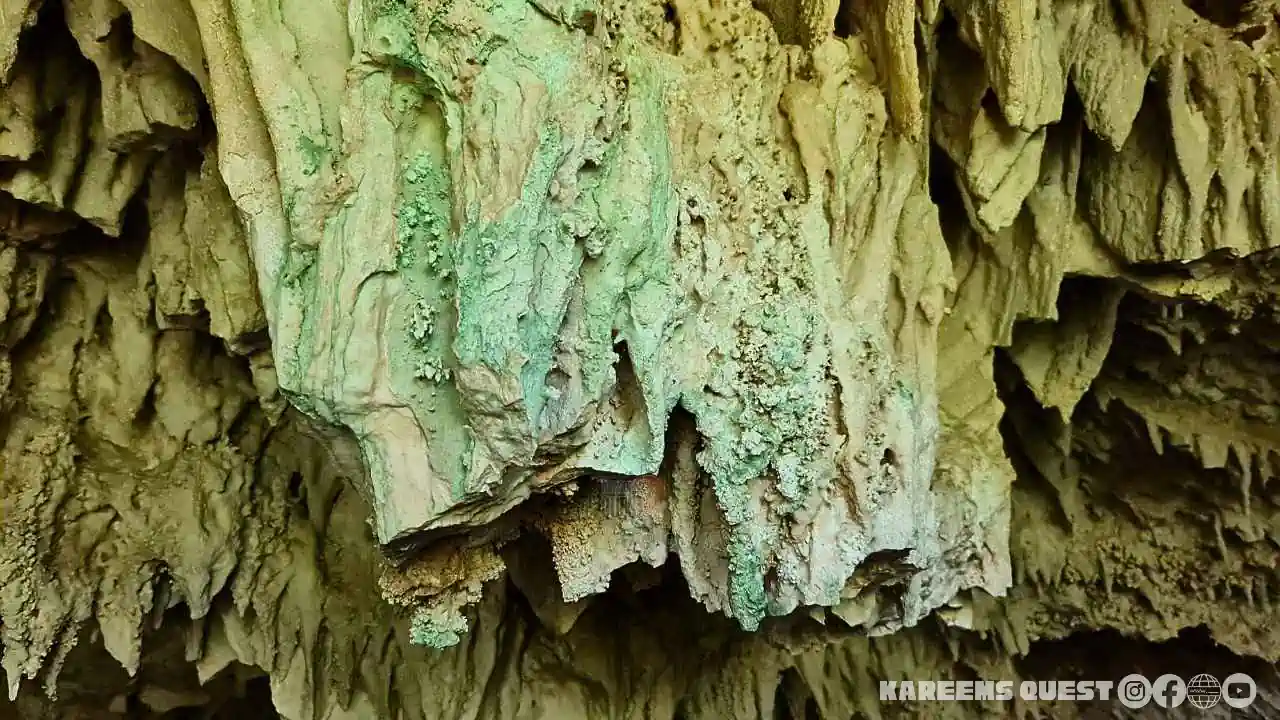
Imagine a vast ocean teeming with life, slowly depositing layers of calcium carbonate – the building blocks of limestone – that would eventually rise to form the dramatic landscape we see today. These very rocks hold fossilised remains of creatures that swam those ancient seas, offering a tangible link to Earth’s rich history.
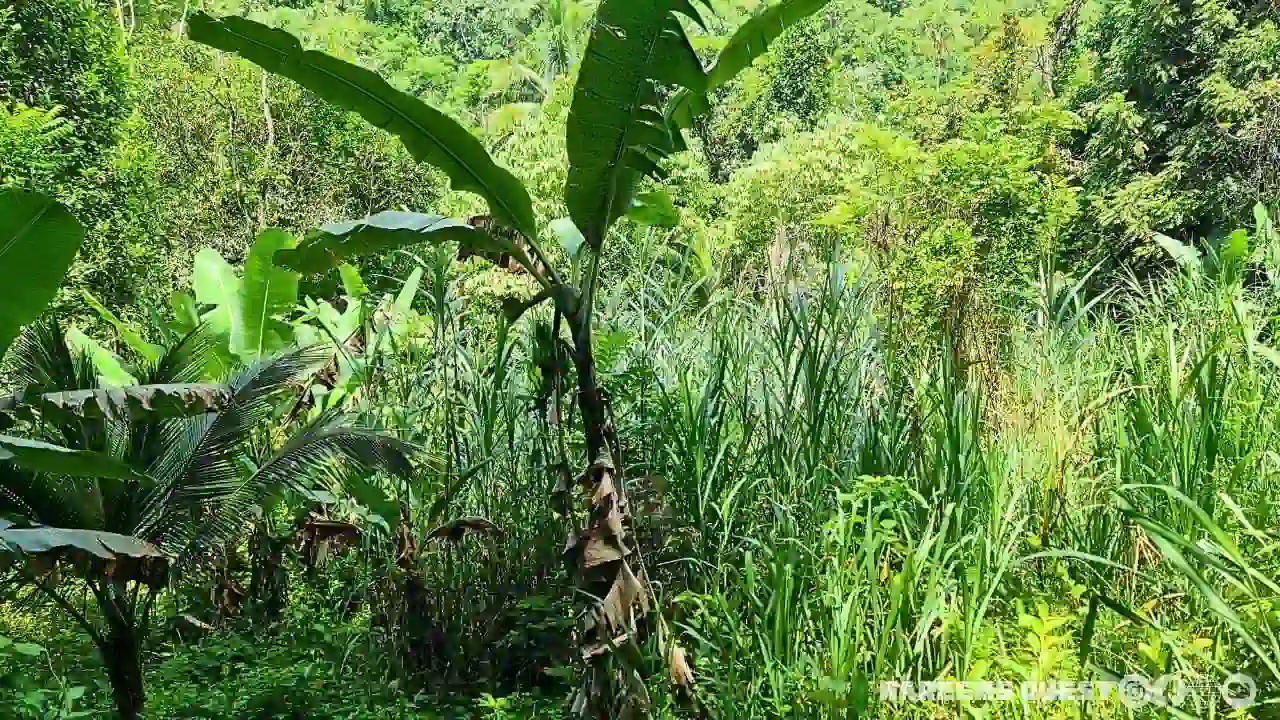
The verdant tapestry of the Cockpit Country unfolded before us. Towering broadleaf trees, their leaves shimmering in the dappled sunlight, provided a cool, refreshing canopy. We spotted banana trees, their heavy bunches adorned with plump ripe bananas. I couldn’t resist indulging in the sweet, earthy taste – a burst of tropical sunshine on the palate.
A Symphony of Life
The symphony of the forest played out around us. The flash of a brightly coloured Jamaican Streamertail (Trochilas polyglottus) flitting between flamboyant wild ginger flowers (Etlingera elatior) added a touch of vibrancy. High above, the piercing cry of the endangered Jamaican Blackbird (Drosophus sp.) echoed through the trees.
Butterflies, with wings as colourful as stained glass, danced on the air currents. Keep your eyes peeled for the breathtaking Blue Morpho (Morpho peleides), its wings a dazzling display of iridescent blue. Beetles of all shapes and sizes scuttled along the forest floor, their exoskeletons gleaming in the dappled light.
A Glimpse into Rural Life
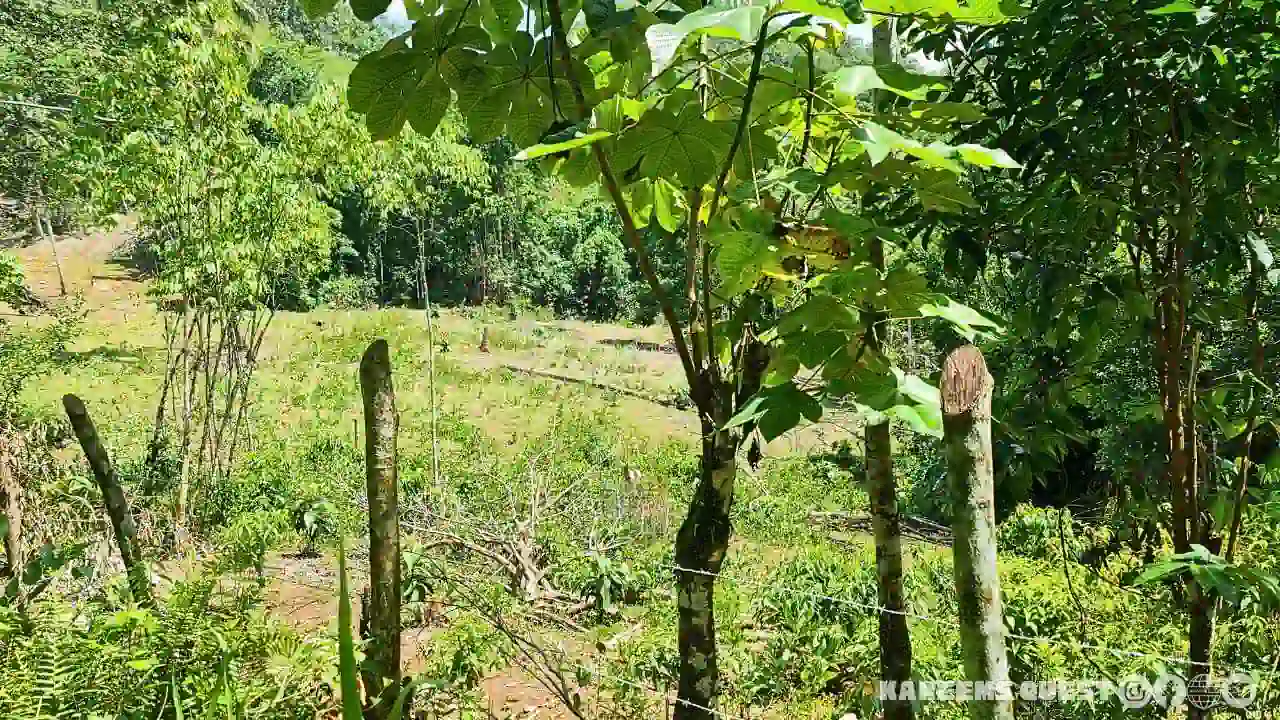
Our trek led us past a well-maintained fenced area, a haven for grazing cows. A friendly farmer sitting on the back of his pickup, swinging his feet loosely. His weathered face etched with stories.
“Hi sir, are these your cattles?” I asked.
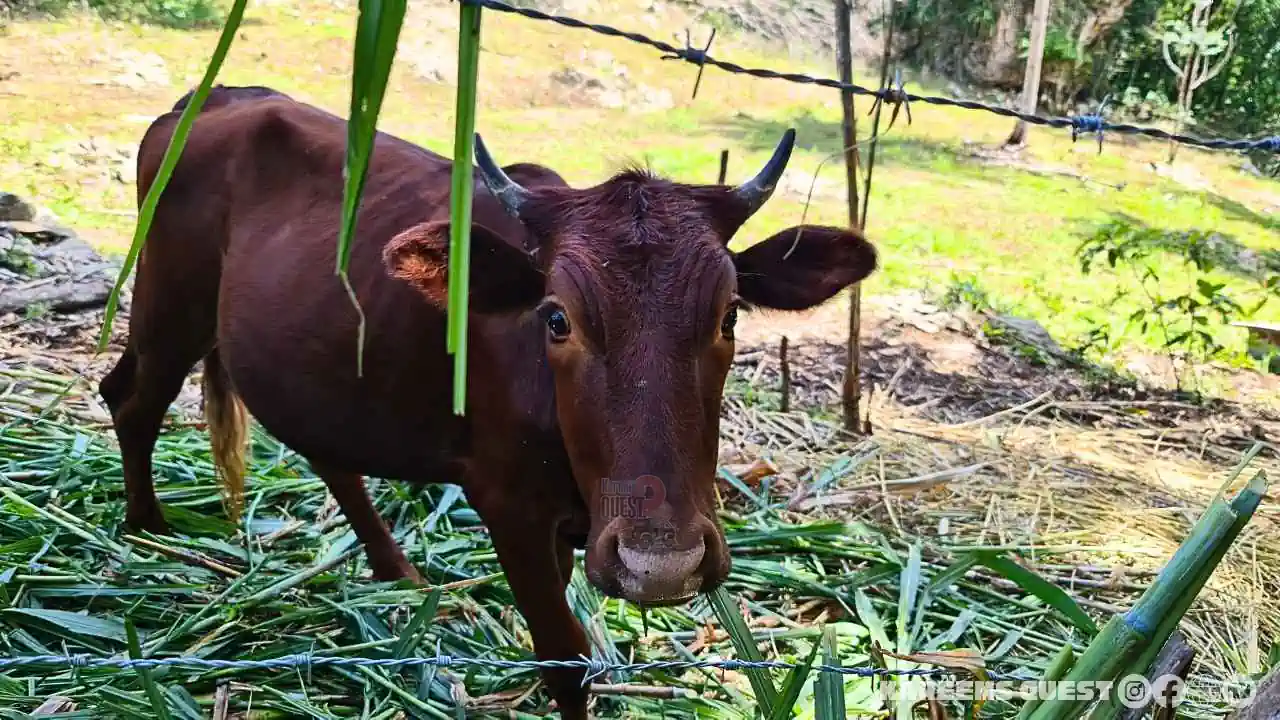
“Yes, I have one cow for breeding, a heifer and a bull. I have to come here everyday and feed them. In three years time the heifer will be ready,” he revealed.
He explained how he nurtured his small herd, and it is a vital part of his livelihood. This brief interaction offered a glimpse into rural life, where harmony with nature is paramount.
Delving into the Cavernous Underworld
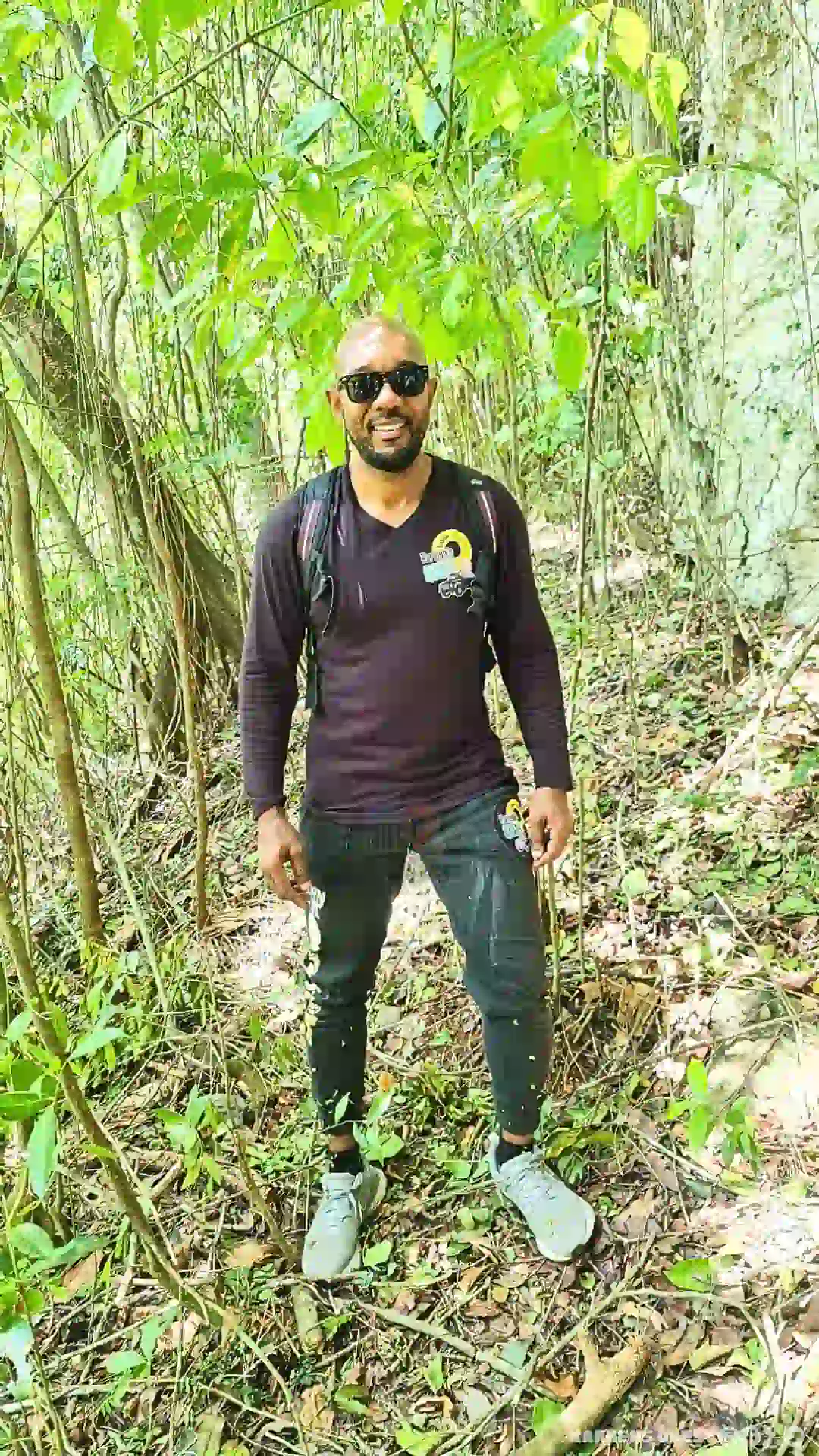
Mosquitoes, the bane of tropical explorers, became our unwelcome companions as we ventured deeper into the forest. For this reason, a long-sleeved shirt is a necessity. Suddenly, Smith pointed to a cave nestled within the hills – our next destination. With each determined step uphill, the air grew cooler, the silence broken only by the crunch of leaves underfoot.
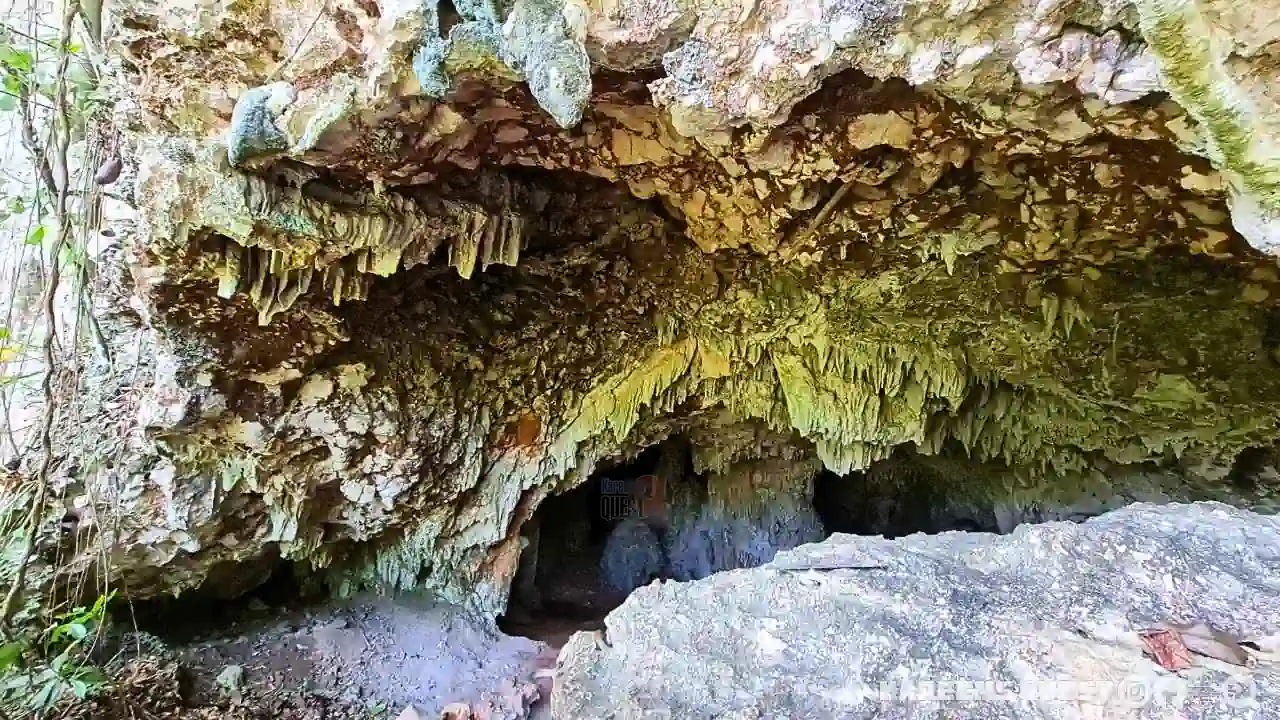
Finally, I stood beside a towering limestone monolith. Water, filtered by millennia of rock, trickled down the surface, a testament to nature’s ingenious water purification system. The sight mirrored a similar display I’d witnessed at the People’s Museum in Spanish Town – a stark reminder of the Cockpit Country’s role as a natural water reservoir.
Within the cool embrace of the cave, Smith explained its historical significance. These caverns provided a safe haven for runaway slaves, the Maroon warriors. With a vantage point overlooking the plains below, they served as strategic outposts, contributing to the Maroons’ successful resistance against the British in the 18th century (which the maroons won).
A Refreshing Interlude and a Salute to Local Staples
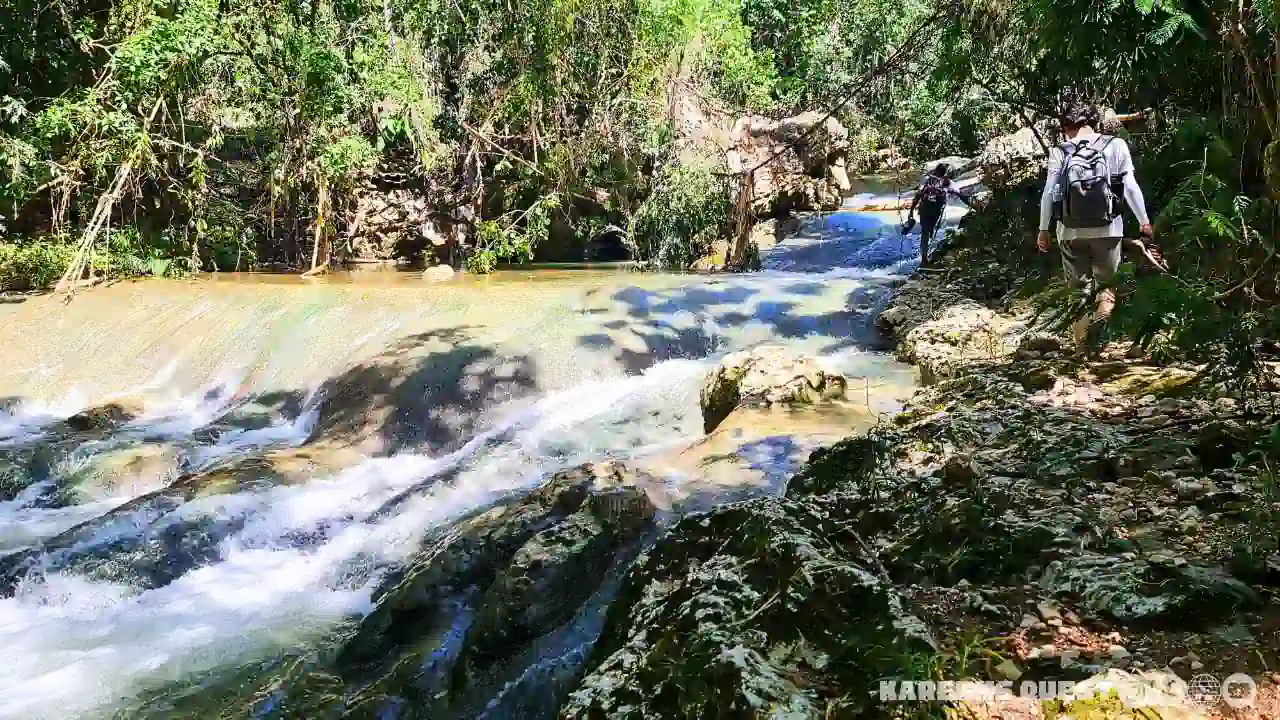
Our descent led us to a crystal-clear river, reminiscent of the famed Blue Hole in St. Mary. The gentle murmur of the flowing water and its inviting coolness proved too tempting to resist. A refreshing dip was a welcome reward for our efforts. Nature even offered a spa treatment – a natural shower created by cascading water channelled through a bamboo stalk.
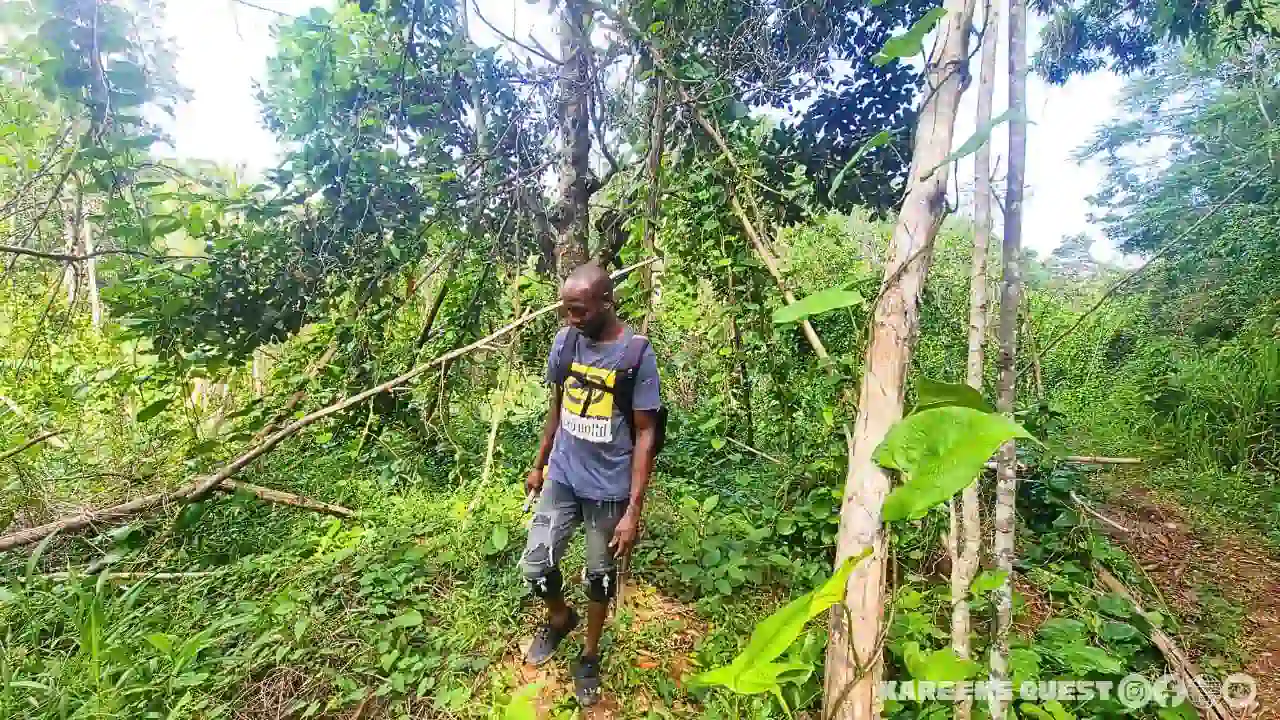
Leaving the cool embrace of the river, we ventured into a local community. Smith insisted on showing us a yam farm, the bedrock of the area’s agricultural life. These plump, starchy tubers, a staple in Jamaican cuisine, thrived in the fertile soil nurtured by the ancient limestone. This humble root vegetable sustains countless families, a symbol of the resourcefulness of the Cockpit Country’s inhabitants.
As the sun began its descent, casting long shadows across the land, we found ourselves back in Rock Spring. A sense of accomplishment, tinged with a touch of melancholy, washed over me.
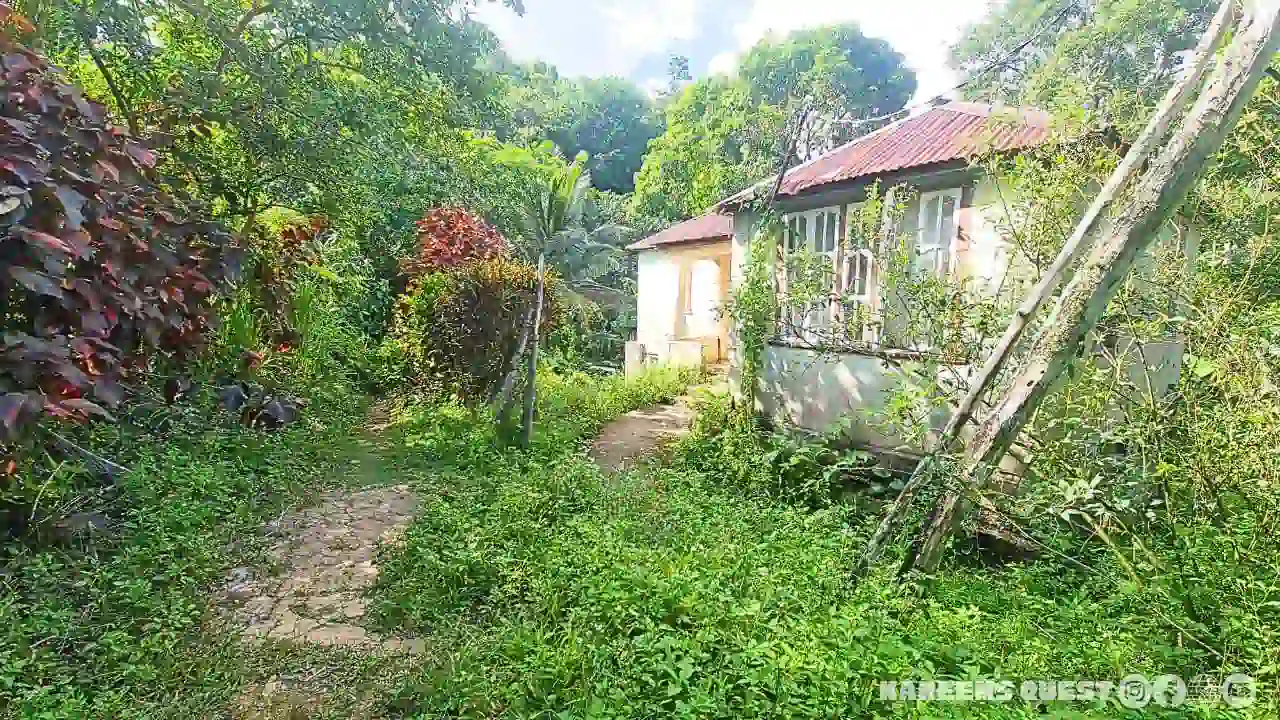
The abandoned house standing sentinel, a relic of a bygone era, served as a poignant reminder of the ever-changing nature of life.
The Cockpit Country wasn’t just a hike; it was a journey through time, a masterpiece woven with the threads of geology, history, and the indomitable spirit of life. It left me yearning to return, to delve deeper into its secrets.
How long does it take to get to Albert Town, from these central points:
Kingston (Norman Manley International Airport): 2 hours and 17 minutes
Montego Bay (Sangsters International Airport): 1 hour and 36 minutes
Ocho Rios: 1 hour and 49 minutes
Savanna-la-Mar: 2 hours and 46 minutes
Create your own adventure
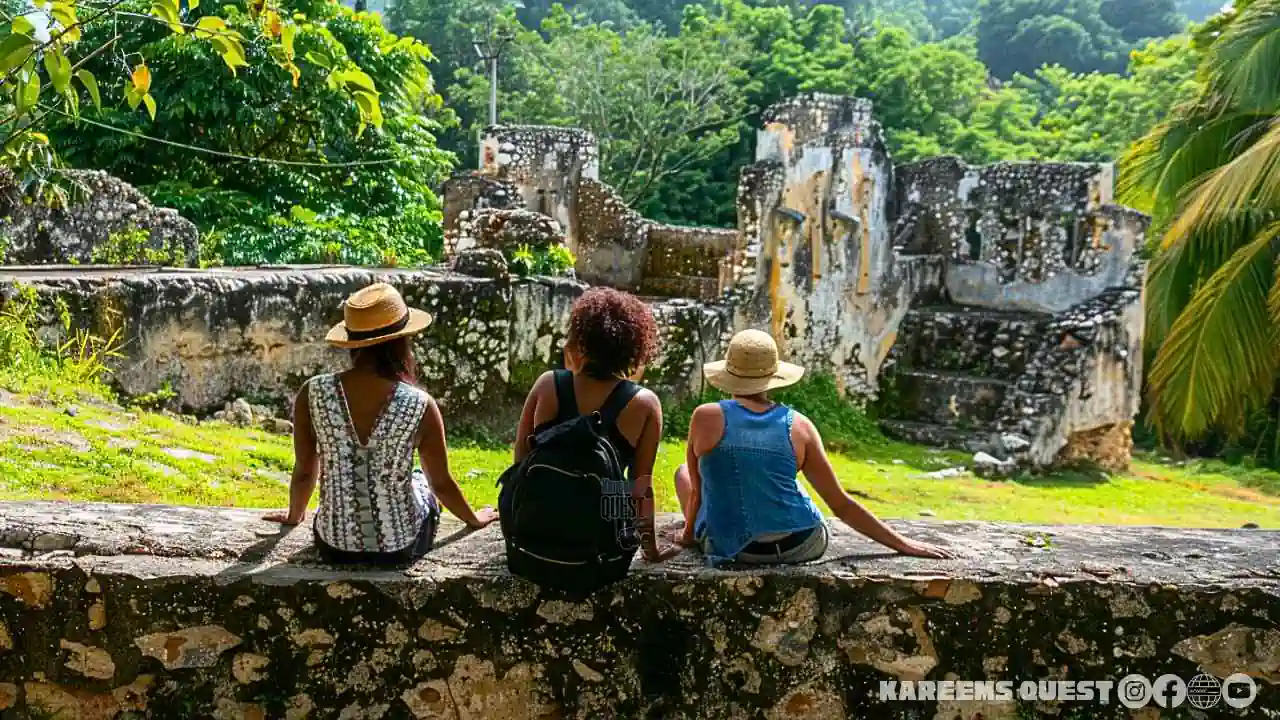 Craving your own Jamaican escape? Head over to our TOUR PAGE to connect with Kareem’s Quest! We can help you plan your itinerary, find the perfect hotels and adventures, and ensure you experience the authentic side of Jamaica. Get ready to fall in love with Jamaica, mon!
Craving your own Jamaican escape? Head over to our TOUR PAGE to connect with Kareem’s Quest! We can help you plan your itinerary, find the perfect hotels and adventures, and ensure you experience the authentic side of Jamaica. Get ready to fall in love with Jamaica, mon!
Useful Information about Jamaica
Click to check Jamaica’s Foreign Exchange Rate.
What is the weather like in Jamaica
The climate in Jamaica is very warm, with an annual average of 32 degrees/ 89.6°F. It is usually warm to hot all year round.
What is the time zone in Jamaica
Eastern Standard Time (GMT-5)
Immigration/ Custom Form
Every visitor is required to fill out a C5 form before entering Jamaica

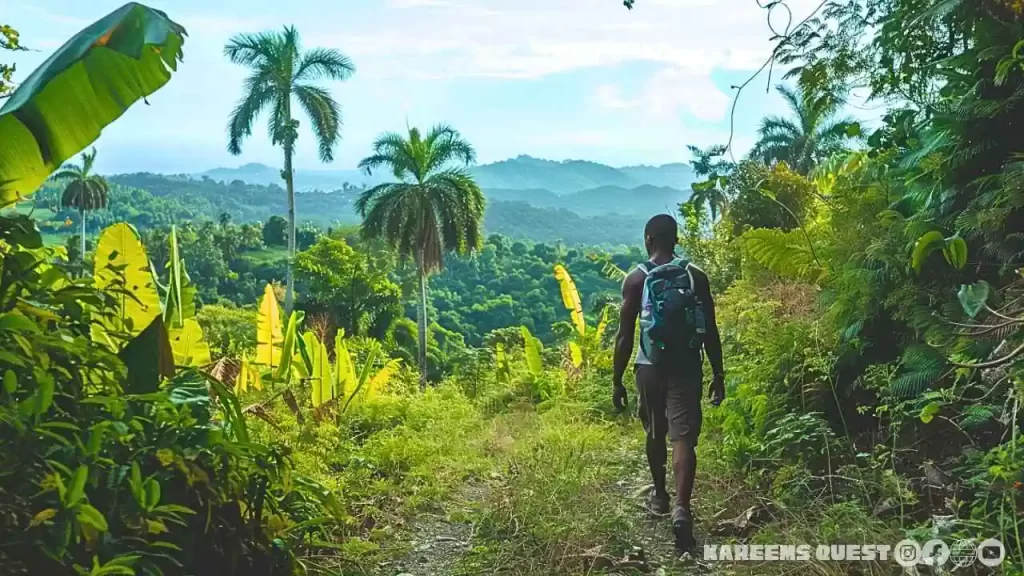


I would like a copy of all the magazines very interesting and exciting information.
Sure the link is at the bottom of the article. However I will also email it to you
I would want to go to the cockpit country. The information published have me excited.
It’s a very nice place to visit, just make sure to wear long sleeves